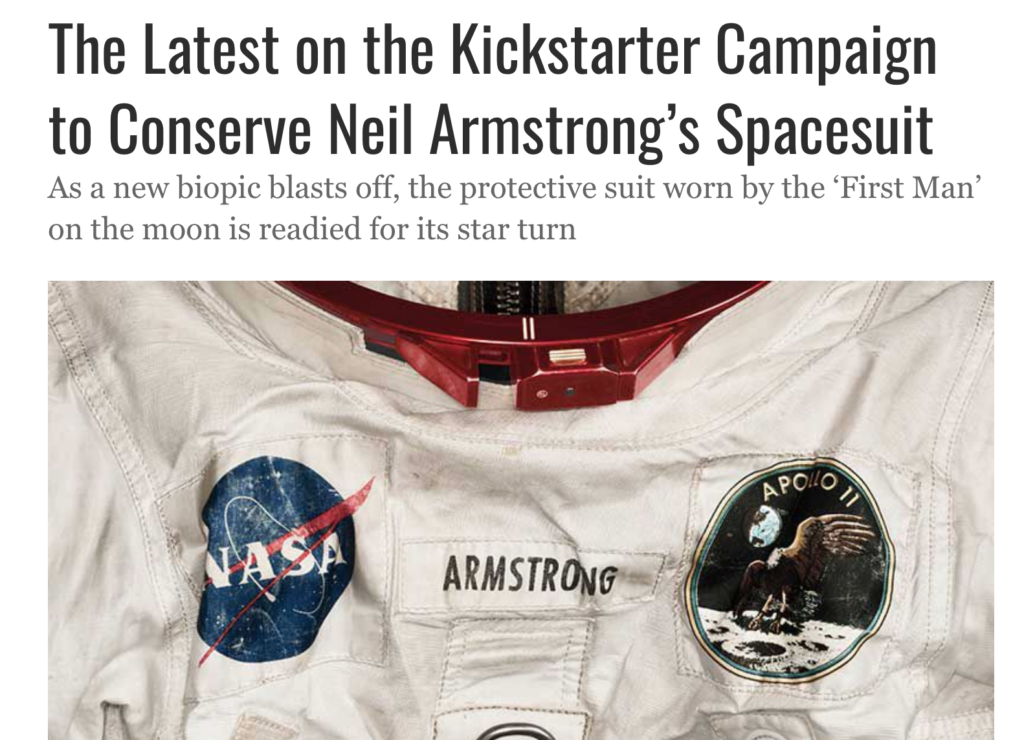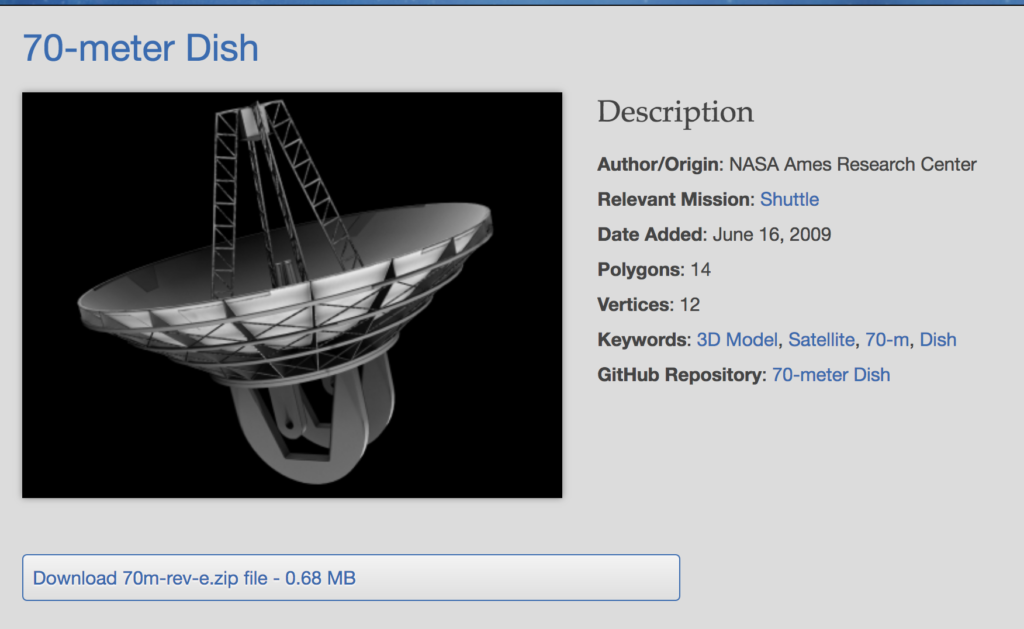Through the beginning stages of this project sculptor Bridgette Mongeon has had to do a lot of research into the spacesuit that Neil Armstrong wore on the moon.

At the same time that Mongeon was beginning to do more extensive research on Neil Armstrong she was also writing a Book on 3D technology in Fine art. She was delighted to discover that in 2015 the Smithsonian began a Kickstarter to enable them not only to try to preserve the suit but to use digital technology such as 3D scanning, photogrammetry, chemical analysis, CT scanning, to create a digital map of the suit.
Though the Smithsonian has been under a deadline to get the suit restored and on display for the 50th anniversary, Space Center Houston has put Mongeon in contact with designated individuals on the project who can assist the artist in trying to capture this important detail.
Sculptor Bridgette Mongeon’s hope is that she can obtain the 3D model of the suit to assist her in her process.
EDUCATION-
Mongeon is very passionate about 3D scanning especially as it pertains to cultural artifacts and has written about it in her book 3D Technology in Fine Art and Craft: Exploring 3D Printing, Scanning Sculpting, and Milling.
Mongeon uses 3D scanning in her work all the time. She will use it with the Neil Armstrong sculpture as well. Recently she scanned a model of her Alice in Wonderland Sculpture. Check out her video showing the 3D scan of Alice. of Alice. Fast forward to 5:14 to see the scan.
Why is 3D scanning important? 3D scanning allows us to preserve and present cultural artifacts. The Smithsonian is not new to 3D scanning; in fact, many museums are scanning their collections so that people from all over the world can view them. Visit Smithsonian x3d to see what else they have scanned.
Another resource for 3D scanning and education is CyArk. CyArk is a nonprofit organization founded in 2003 to digitally record, archive and share the world’s most significant cultural heritage and ensure that these places continue to inspire wonder and curiosity for decades to come. Check out their scan of Mount Rushmore, the Royal Tombs of Kasubi or the Parthenon. They offer free lesson plans for students on their website.

Did you know that NASA has free 3D models on their website? Their website says you will find a growing collection of 3D models, textures, and images from inside NASA. All of these resources are free to download and use.
As part of the Smithsonian Kickstarter for Neil Armstrong Suit preservation they did offer the glove as a 3D file for printing. With a little digging Mongeon found this link that provides files.
Keep watching for more educational resources. What is your class doing with 3D scanning or 3D objects?

No comments yet.